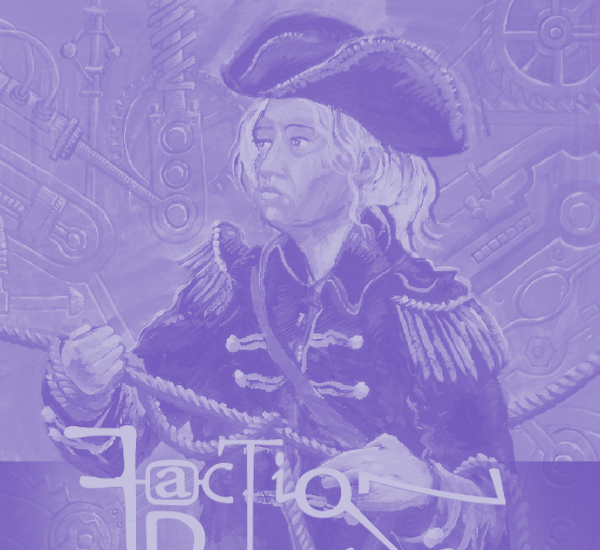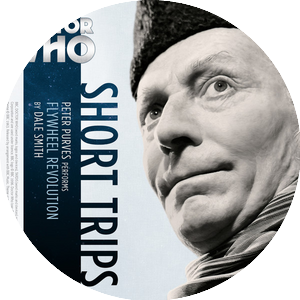Invitation
In 2010, my first child was born, and she did not enjoy sleeping. In fact the only time she properly started sleeping through the night was when her brother was born the next year. And he really did not enjoy sleeping. I used to do the majority of my writing late at night, and it was pretty clear that something had to give: apparently it’s a lot easier to stop writing than it is to give away two children who don’t sleep, so that’s what I did.
A few people asked me if I could write them some words, and I apologised as best I could. A few people asked for something short, and I wanted to say yes. But even a two thousand word story became a slog, with barely 50 words getting down on the page before I had to pack up for the night. My attention span was shot, and eventually I started being glad nobody was asking for anything longer. I wasn’t sure I’d ever be able to write anything substantial ever again.
Then, in August 2012, Stuart Douglas of Obverse Books asked if I’d like to write a Faction Paradox book.
At that point, the sleepless nights had started to settle down into the odd rough night a week. Stuart didn’t have a specific deadline for the book - in fact, he had a run of things waiting to be published so all he knew for sure was that it wouldn’t be needed soon. He wasn’t particularly prescriptive about what the story needed to be: the Faction Paradox series is stand alone, so there was no ongoing narrative that needed to be served and no recurring characters to service. I knew that if I said no to this, then I would never have a better opportunity to ease myself back into the saddle.
It was a choice between saying yes, or accepting I’d never write again.
I said yes.
Inspiration
At the time, I was working in the daylight hours for an organisation called Co-operatives UK. They are the trade association for the UK Co-operative Movement, a social and political movement with a long and interesting history that is only partially about supermarkets. At their heart, co-operatives are about democracy and self-help, and - when they work - do things that other types of businesses just can’t. I knew I wanted to include something of the good and bad about co-operatism in the story.
I also knew that my favourite Faction Paradox book (excluding Of The City of the Saved, which was already being thoroughly explored elsewhere) was Simon Bucher-Jones and Mark Clapham’s The Taking of Planet 5. I similarly wanted to play with creatures that existing between the universes, and the damage that beings of such a scale could do. With the Faction’s adoption of voodoo, these creatures became Loa, and Spinning Jenny the Loa of Industry was born. From there it was only a short step to bring Moby Dick into it, with Elizabeth Howkins becoming my story’s Captain Ahab.
Elizabeth was the other main inspiration behind the book. I wanted to write an older, female character as an action hero, because it was something I wasn’t aware of being done a lot. My wife’s grandmother – Betty Howkins – had died recently, and left us some beautiful diaries written primarily to her late husband, Bill. I knew I wanted to bring something of the feeling of those diaries into my book.
The Pitch
Initially, I worked up a one-page pitch for Stuart to give him an idea of the story. This was finished at the end of August, and sent across. It contained only the bare bones of who, what and why, and also settled on the village of Strines as its where. Stuart was happy with the brief outline, but Faction Paradox is a licensed property, created and owned by Lawrence Miles. The next stage was to write a full synopsis, which would be submitted to Lawrence’s agent for official approval.
Which meant fleshing out the story.
Getting the Story
While I was having my break from writing, I spent a lot of time learning how I should have been doing it all along. I listened to podcasts, read books and spent my time devouring anything I could find about the mechanics of writing. I can’t really say how much most of the advice affected how I approached the story, as most of it boiled down to giving yourself the time to let your instincts tell you where the problems were. But one thing that it definitely did give my story was a structure: I was reading a book called Save the Cat, which championed a Hollywood bastardisation of the Hero’s Journey. I’ve since discovered the much superior Screenwriting 101 by FILM CRIT HULK, but at the time I wanted to give this structure a try.
For the original synopsis, I marked out the 15 beats that the structure demanded and sketched in the ideas I already had in the appropriate places. This left a lot of room to fill, but the rules of the structure meant I already knew the kind of things that would be happening in those gaps. Once I had a beat sheet completed that adhered to the structure, I threw aside the book: as I expanded the beat sheet into a full synopsis, I didn’t want to be tied too strongly to the structure for fear of making it overly formulaic. A few moments got cut, and some others slotted in.
When I was happy with it, I sent the synopsis to Stuart to pass on for approval. That took a little longer than expected, and by the time I got the reply another month had passed. Stuart said I could start writing, but as I looked over the synopsis again I realised I could make it better. I chopped and changed a few things - adding in a more geographically centred opening scene that had a nod back to Heritage and the film Bad Day at Black Rock. The rest of the story changed a good deal, with a cadre of Homeworld soldiers finding themselves written out and everybody having less of an idea of exactly what was going on until the very end.
The mechanics of the story changed in the way that they normally do when I’m actually putting words down on the page. Normally there isn’t time to redraft a synopsis before I start writing.
When I finally sat down to write something, I leant heavily on the Pomodoro technique to boost my shattered concentration. As there still wasn’t a firm deadline, I didn’t push myself too hard: when I wrote Heritage, I aimed for 2000 words a day; for Spinning Jenny, I was happy if I got 500. Slowly, carefully, slowly the story got finished.
What Happened Next?
It was 2013, and with a finished story in front of me, I got in touch with Stuart to see if there was a deadline yet.
There wasn’t.
What’s more, real life was creeping up on Stuart, and he knew he wouldn’t have a chance to read my draft for a fair while, having other books that were already scheduled to edit. It was very tempting just to send the book in and be done with it, but I knew I had an opportunity to do something I rarely have a chance to: Time away from a story is the best thing for letting you see its flaws, and the first thing that you lose when there’s a deadline.
When I read the story again, I started planning for making improvements. In particular, a sequence early in the book read a little flat and by the numbers: I eventually rewrote the whole chapter from scratch to give a little more background to Elizabeth, as well as to demonstrate the effect that the Loa were having on our universe. A number of other touch-ups were made, and when Stuart asked in January 2014 how the book was going, I could confidently tell him it would be done in two weeks.
I sent the finished “first” draft to Stuart in May 2014.
With the book submitted, I happily moved onto other things - including the Perennial Ms Wildthyme collection for Obverse. I kept an eye on the schedules and waited to see if Stuart had any feedback, but when he said there was no deadline, he meant there was no deadline: it was October 2015 when Stuart put me in touch with Lawrence Burton to discuss covers. By March 2016 we had a cover and a blurb, but still no word on a publication date, or feedback on the draft from Stuart. I understood the circumstances completely, and couldn’t feel aggrieved when the lack of a deadline was one of the main things that made me say yes to the job. But I have to admit that I did tell at least one person that I wasn’t entirely convinced it would ever be published.
But I was perfectly happy: I was happy with the story, and I was also back writing regularly again. With the additional things I’d learned over my sabbatical, I felt like I was writing things that were better than I’d ever done before. And also - I have to admit - that I was even further away from the energy and fluidity I had when I was younger and less informed. Everything takes longer now than it used to, but my God the scaffolding that holds it all up is pretty.
And, as if to prove it, Stuart got in touch in September 2017 to say that he had no feedback to give on the book and that he liked it so much he was slating it for the anniversary slot in November 2017. I immediately responded by re-editing the original draft and resubmitting it.
I’m sure it will be finished eventually …


